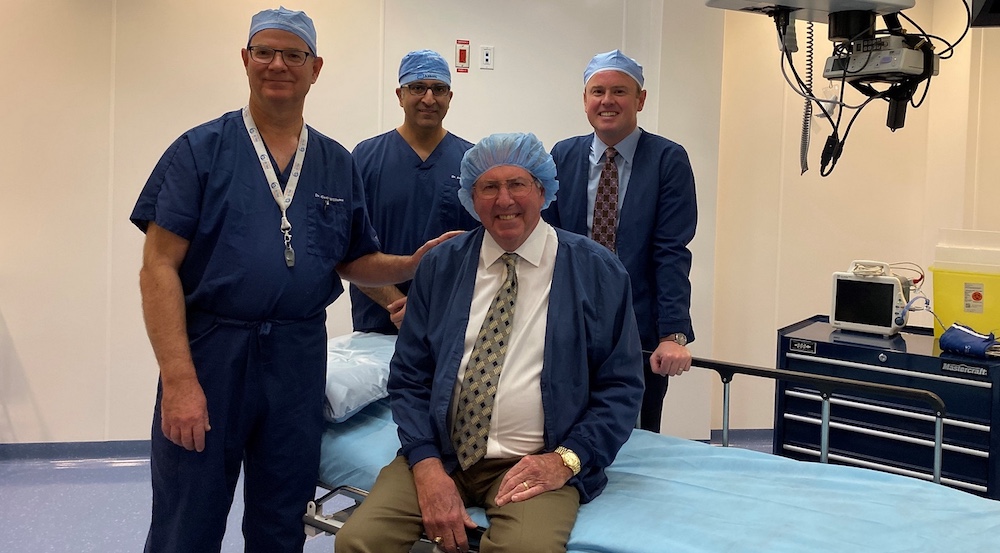Using private medical clinics to remedy long wait times for surgeries in Alberta’s public health-care system, as the United Conservative Party government says it expects to do, is about as likely to work as treating iron-poor blood by attaching blood-sucking leeches to patients’ arms and legs.
That is to say, the results are certain to be considerably different than those advertised, and not in a good way.
Pretty much everyone who’s been paying attention to the Canadian debate about public health care at any time during the past half century understands this — including, one presumes, the market-fundamentalist think-tanks that cook up fatuous studies to support announcements like the one yesterday by Health Minister Tyler Shandro.
Assigning surgeries like cataract removal and joint replacements to private clinics will give more time and resources to public hospitals for life-saving surgeries, Shandro claimed at a news conference at a private eye-surgery clinic in Calgary.
A day earlier, a spokesperson for Shandro was touting the questionable conclusions of an astonishingly well-timed press release by the Fraser Institute, the Vancouver-based purveyor of comforting fantasies about the ability of the private sector to solve all of society’s ills, including long surgical wait times.
The much publicized effort by the foreign-funded Vancouver think-tank turned out to have been based on a survey answered by only 17 per cent of the medical specialists who were sent the questionnaire — presumably the 17 per cent who reckoned they had the most to gain from further privatization.
Be that as it may, Shandro told credulous reporters in Calgary that that by hooking up with private clinics the government figures Alberta will become the only province in Canada that meets surgical wait-time benchmarks.
We’ll see about that, I guess.
It didn’t actually work out all that well in the rectangular province next door, where the Saskatchewan Party government threw money at the wait-time problem for a spell in the early 2000s, successfully reducing average waits until the program ended in 2014. As soon as that happened, Saskatchewan’s surgical wait-time lists went back to growing at about the same pace as Alberta’s, so it’s highly doubtful the use of private clinics was the foundation of Saskatchewan’s short-lived success.
Premier Jason Kenney used to tout the Saskatchewan results, although he forgot to mention Alberta’s experience with the same notion, and what happened when a private surgical clinic was allowed to do business in a former hospital in Calgary when Conservative Ralph Klein was premier and then went bankrupt on Conservative Ed Stelmach’s watch. Taxpayers ended up holding the bag to ensure the essential hip and knee surgeries the clinic had been contracted to perform continued to be available.
Latter-day United Conservatives like Shandro and Kenney also always seem to forget that the surgeries done by that private clinic cost about $500 more per hip or knee than the same ones in a public facility in Calgary, throwing the cost-saving claims of the private-sector approach into further doubt.
Bankruptcies notwithstanding, privatization and two-tier medicine don’t work very well at reducing wait times, as researchers Seth Klein and Andrew Leyland showed for the Canadian Centre for Policy Alternatives in 2016. The principal reasons they identified:
- There are only so many doctors and they can’t be in two places at the same time — so taking surgeons out of the public system to work for private clinics means those of us without the means to pay extra for private service will have to wait longer.
- The business case for private clinics only works if there are long waits in the public system — so there’s actually an incentive for double-dipping doctors in private practice to prolong waits for their public-sector patients.
- Letting clinics and physicians maintain their own wait lists is less efficient than assigning the first available surgeon.
- When folks with money have institutionalized access to better-quality care than the rest of us, they no longer have any stake in demanding the public system deliver quality care.
As the Saskatchewan experience suggests, Shandro’s plan might have a chance of working if the UCP government is prepared to spend a lot of money to ensure wait lists for everyone are reduced.
Knowing everything you know now about how the UCP operates, how likely do you think that is?
David Climenhaga, author of the Alberta Diary blog, is a journalist, author, journalism teacher, poet and trade union communicator who has worked in senior writing and editing positions at The Globe and Mail and the Calgary Herald. This post also appears on David Climenhaga’s blog, AlbertaPolitics.ca.
Image: Government of Alberta/Flickr



